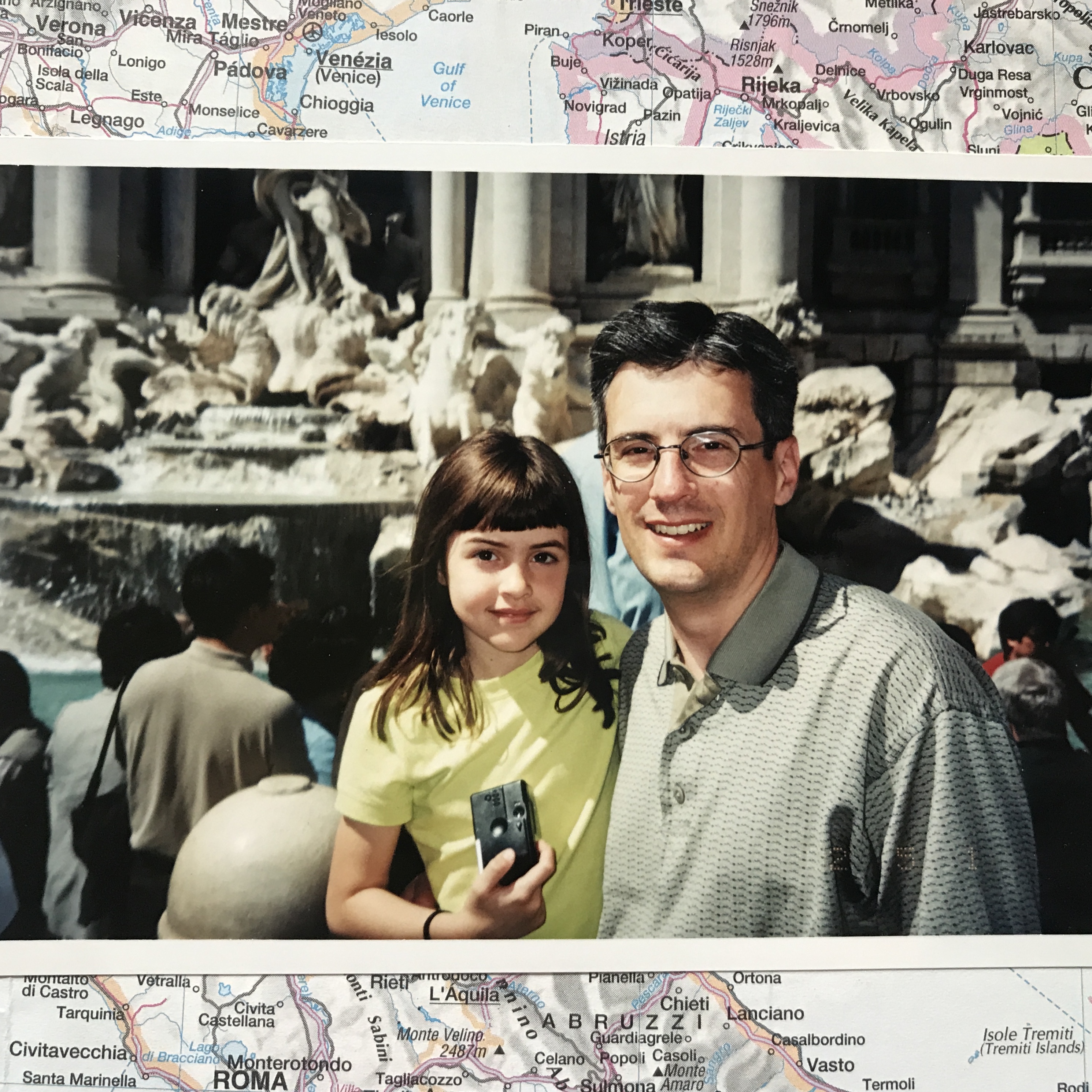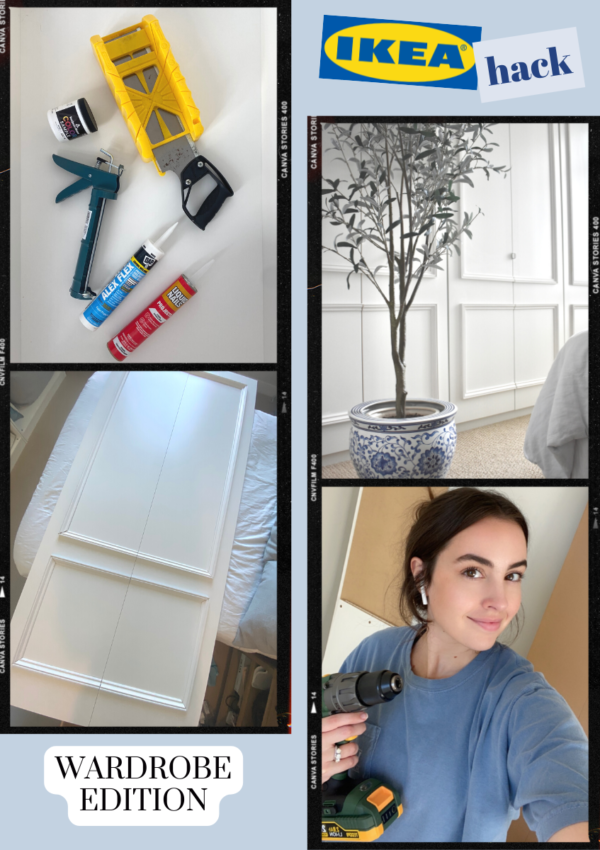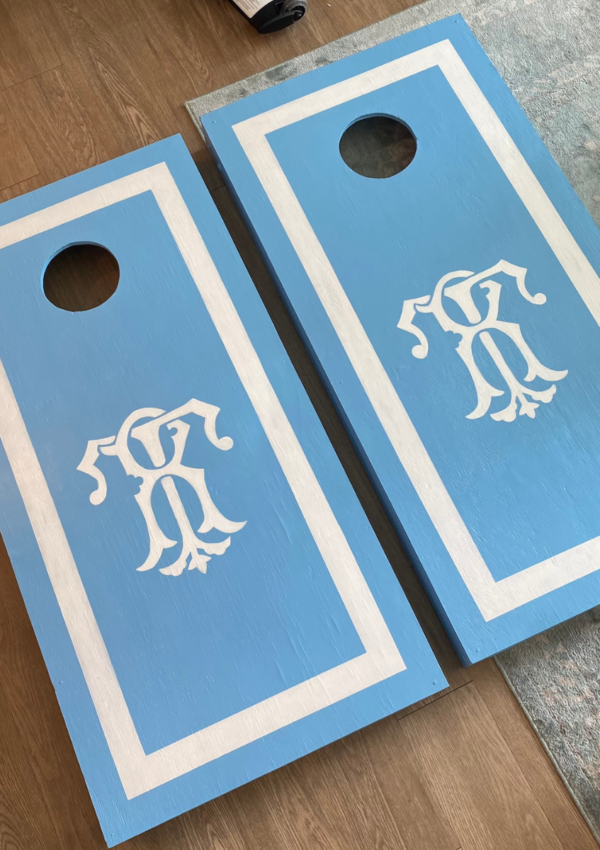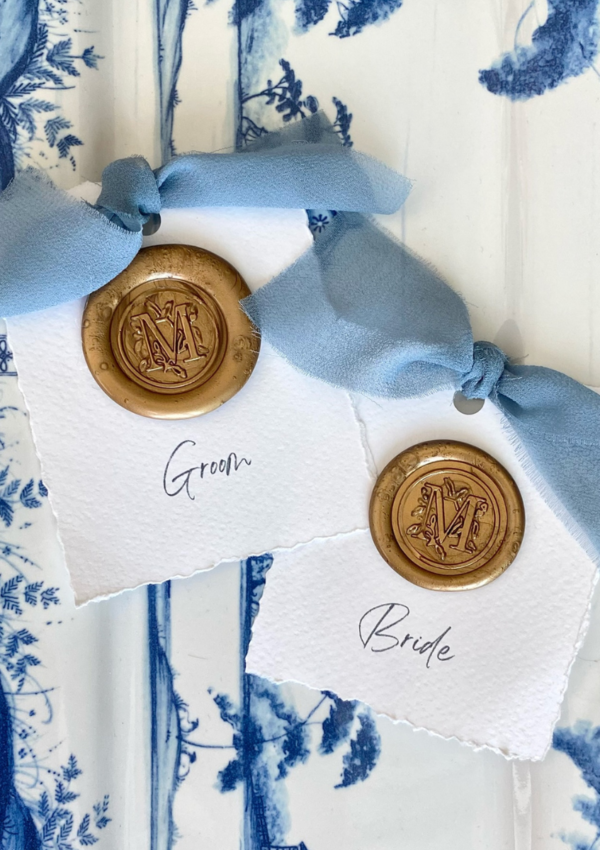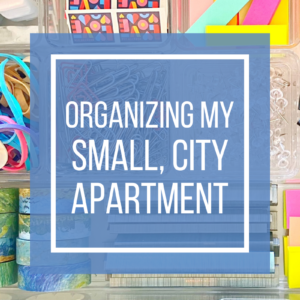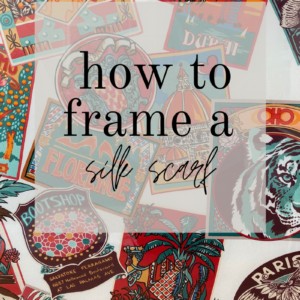
My father recently gifted a Salvatore Ferragamo scarf to me that he picked up on a recent trip to Rome, Italy. When I opened the gift, I immediately fell in love with the beautiful colors that make up the ‘cartoline’ or postcard print. In total, there are 34 images on the scarf that include flowers, animals, butterflies, exotic cats, and Palazzo Feroni (a gothic palace the shoe designer, Salvatore Ferragamo, purchased in the 1930s). With all of the traveling we have done together, it was the perfect gift! I didn’t want the scarf to sit boxed-up in my closet, so I had the idea to make it into wall art! I knew the vibrant pink in the scarf would make a great statement piece!
I looked into several framing sites and was shocked at how expensive custom frames were! Luckily, I stumbled across one that made customizing a frame easy and didn’t break the bank. Check out how I did it below:
What You’ll Need:
- Tape Measure (here, here)
- Scarf
- Frame (here, here)
- Acid-Free tape (here, here)
- Pins (here)
- Microfiber towel (here)
How to Frame Your Scarf:
- Measure your scarf: Grab a tape measure and find those dimensions! My scarf measured 35.4 in x 35.4 in, which I compared against the website‘s product details (since my scarf was still online)- just to double check!

2. Find a frame: There are several places you could purchase a frame from. I chose Frame It Easy (FYI not sponsored) since I found it to be the best price for the size I needed. If you order from here, these are the customization steps you’ll see:
- Art Size: On this website, enter the size of your art (aka scarf) and the site automatically calculates the overall dimensions of the frame based on your scarf, so the piece fits LIKE A GLOVE. They even factor in some overlap between the scarf and frame, so it doesn’t fall through once hung up!
- Style: Next, select the type of frame you want (wood vs. metal) that best showcases your scarf! They have everything from sleek, modern styles to gold, ornate frames. I selected a wood frame in color: Derby in White.
- Matting vs. no matting: Select whether or not you want a mat. Matting can easily elevate your scarf to the next level. Due to the size of my scarf, the matting option wasn’t available. However, if I had a smaller scarf, I would have purchased one!
- Cover: In this last customization step, select between a clear or non-glare acrylic cover for your art. The clear option is like glass and great for homes, galleries, and museums (I chose this!). I love that the cover protects your scarf from some UV light, which I was worried about knowing my art would sit in direct sunlight during a portion of the day. This will help slow down the process of fading over time. The non-glare option also protects your art from some UV light, but diffuses the light with a matted finish. Note: this option does soften to the colors of your art slightly.
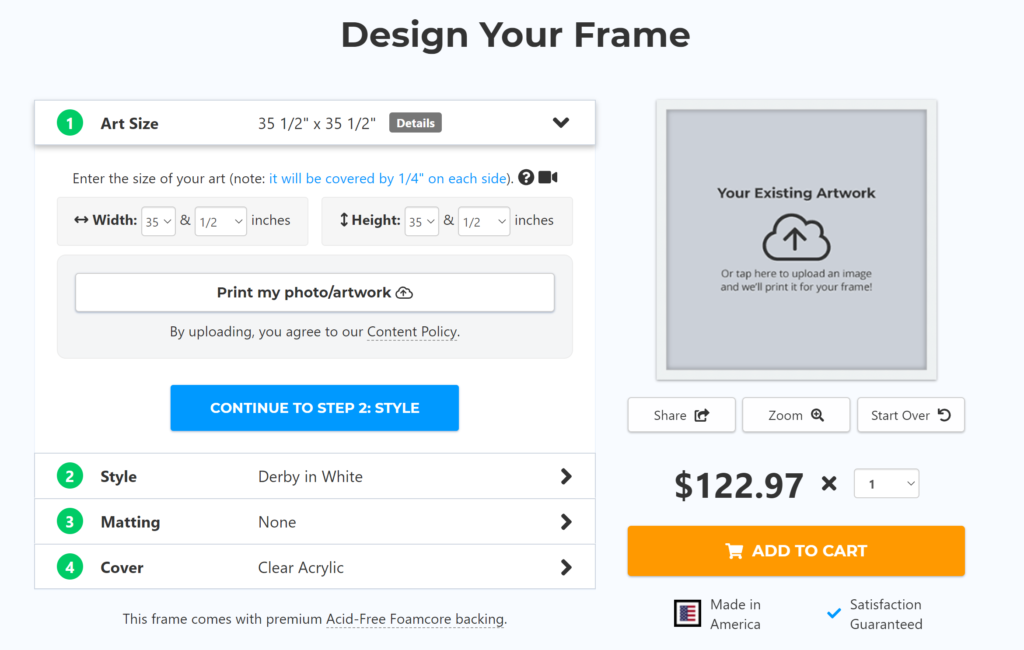
Shipping was a spicy $30, but the large frame came nicely packaged with no scratches, dents, or nicks so no complaints from this girl (see images below). I also applied the coupon code: FRAMEIT, which saved me 10%.

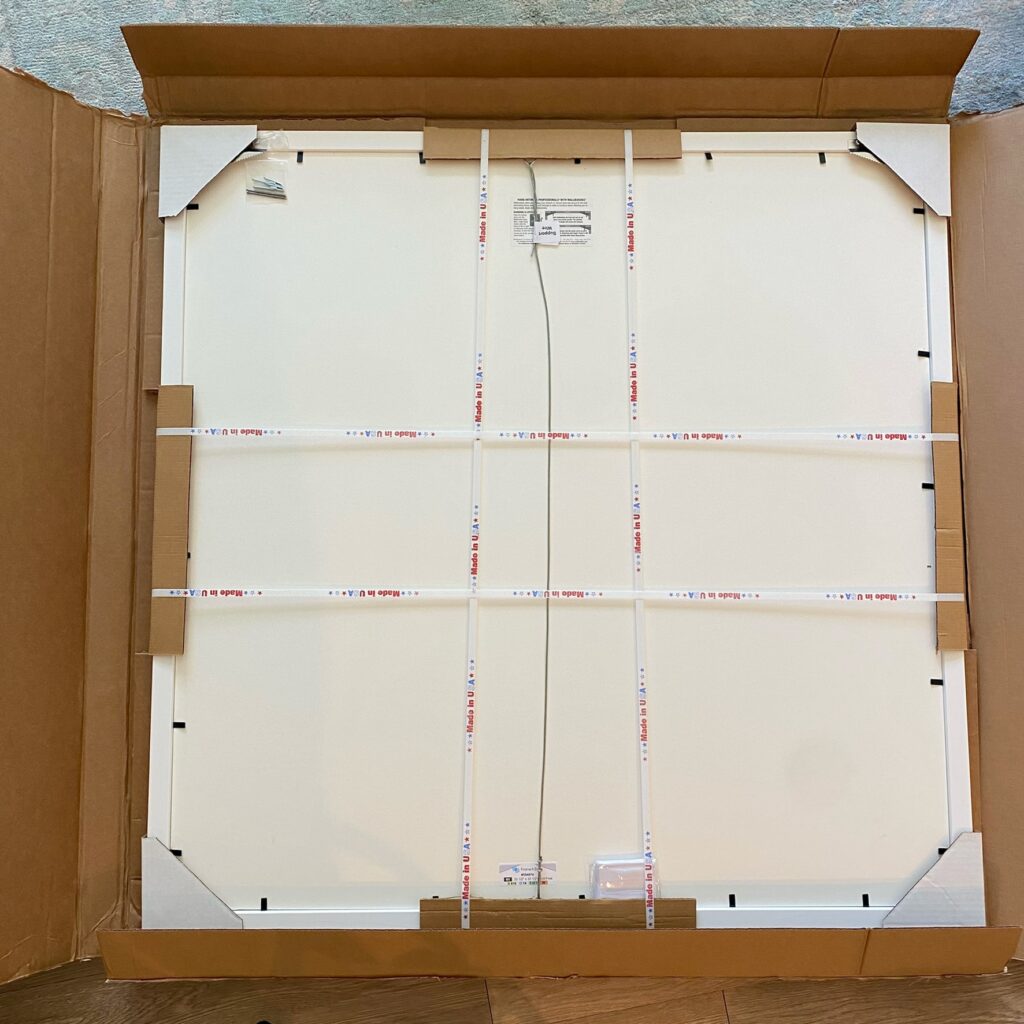
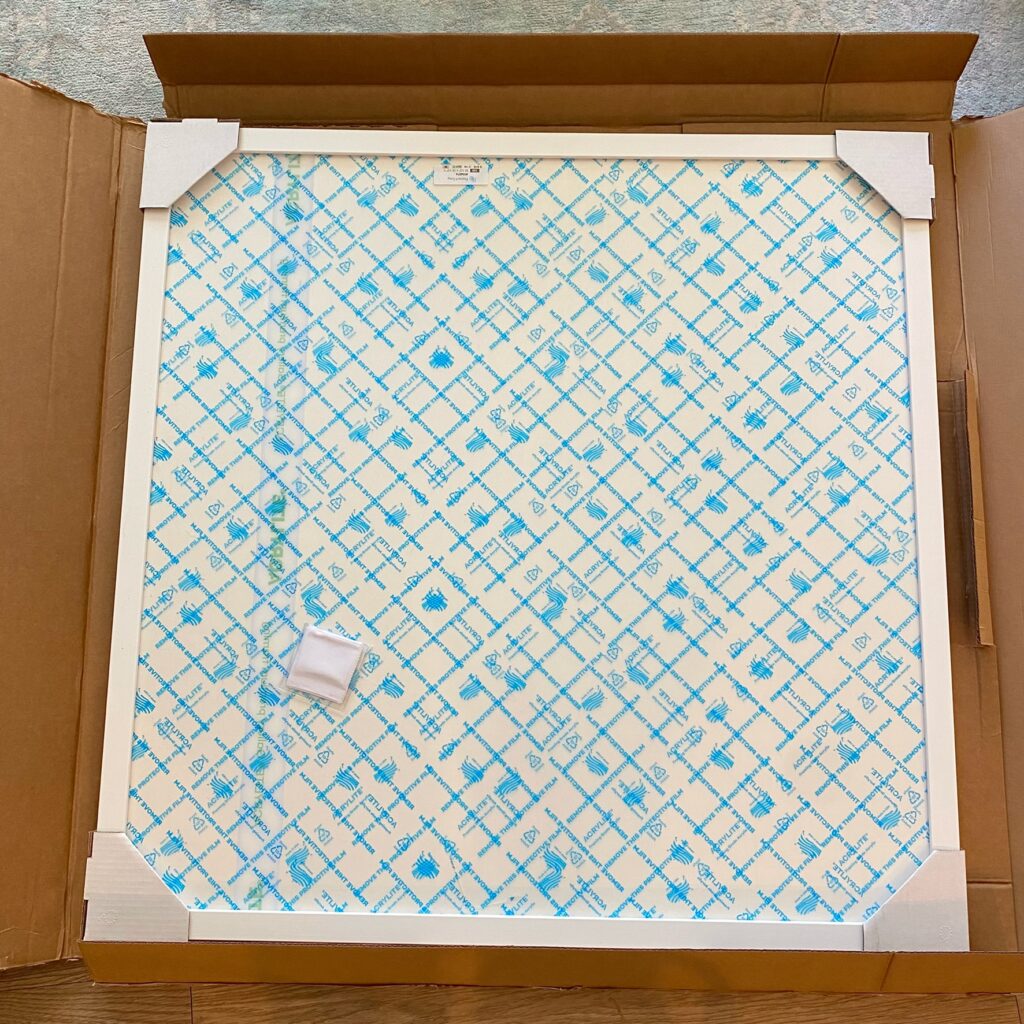
3. Iron/ Steam your Scarf: After your frame arrives, you’re in the clear to start removing those pesky wrinkles in your scarf. There are two solid de-wrinkling routes: iron or steam. I don’t own a steamer, so I selected the lowest setting (for silk), placed a pillowcase over my scarf (added layer for protection), and ironed away. Since silk is a delicate fabric, I made sure to take additional steps to protect the scarf. If you have a steamer, I would hold it about 6-7 inches away from your scarf (moving top to bottom).

4. Pull metal tabs up: If you ordered the same frame as I did, there will be points/metal tabs you’ll have to lift, which hold everything in place. After lifting them all up, you’ll be able to slide the foam backing out. Life hack: use a coin to lift and close those suckers. No reason for you to destroy your fingers in the process.

5. Tape/Pin the scarf down: If you go the tape route, make sure you only use framer’s/artist’s tape, which is acid-free and won’t leave a sticky residue behind on your scarf. I purchased both the pins and tape to try. I was worried that even if I pinned at the rolled edges of the scarf, there was a chance holes could develop over time. I ended up taping the edges of my scarf down to the foam core board and it worked out well! If you want your scarf to be super taught, the pins might be a better route for your piece.
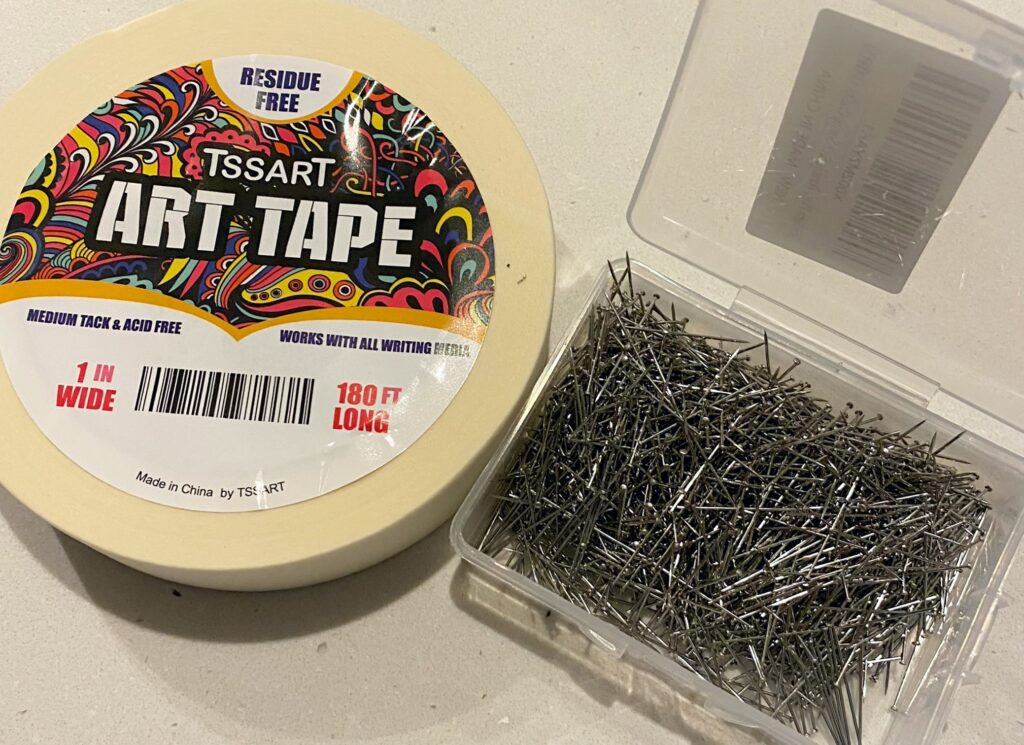

6. Remove protective film: To avoid fingerprints, only remove the protective film from the side the scarf will touch. Before you place the scarf, use the microfiber cloth that came with the frame (or find a similar one here) to wipe up any dust.
7. Place the scarf onto the acrylic side without protective film
8. Close metal tabs
9. Take off remaining protective film from front, hang frame, and voilà – DONE!
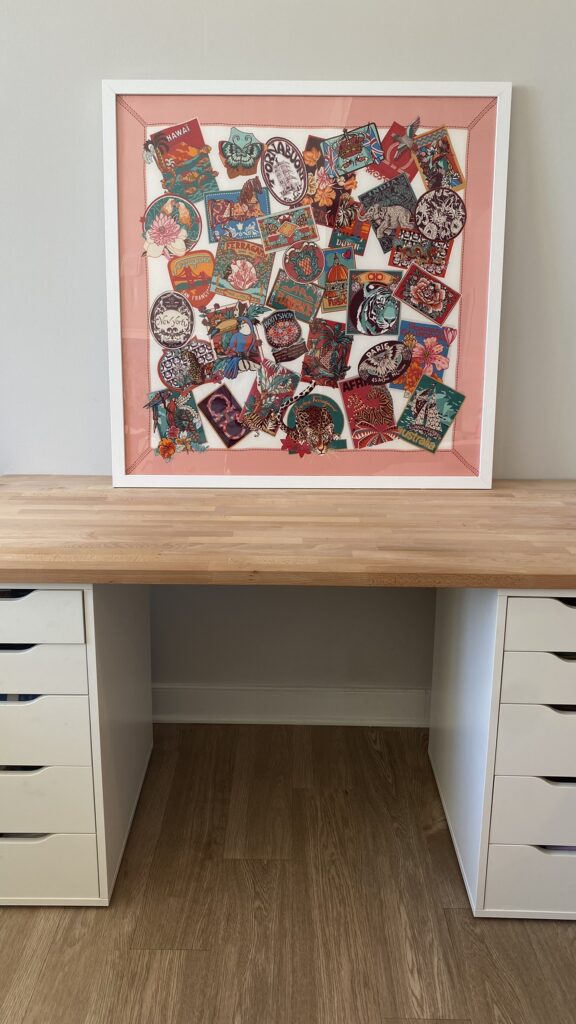
Eventually, I’ll hang my scarf up somewhere, but for now it’s sitting on my desk. Love the pop of color and reminder to get out and travel more!


